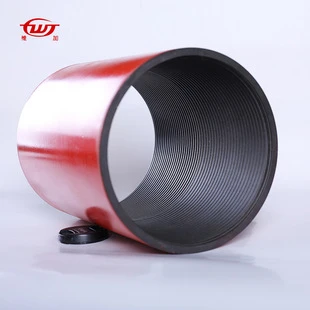- Afrikaans
- Albanian
- Amharic
- Arabic
- Armenian
- Azerbaijani
- Basque
- Belarusian
- Bengali
- Bosnian
- Bulgarian
- Catalan
- Cebuano
- Corsican
- Croatian
- Czech
- Danish
- Dutch
- English
- Esperanto
- Estonian
- Finnish
- French
- Frisian
- Galician
- Georgian
- German
- Greek
- Gujarati
- Haitian Creole
- hausa
- hawaiian
- Hebrew
- Hindi
- Miao
- Hungarian
- Icelandic
- igbo
- Indonesian
- irish
- Italian
- Japanese
- Javanese
- Kannada
- kazakh
- Khmer
- Rwandese
- Korean
- Kurdish
- Kyrgyz
- Lao
- Latin
- Latvian
- Lithuanian
- Luxembourgish
- Macedonian
- Malgashi
- Malay
- Malayalam
- Maltese
- Maori
- Marathi
- Mongolian
- Myanmar
- Nepali
- Norwegian
- Norwegian
- Occitan
- Pashto
- Persian
- Polish
- Portuguese
- Punjabi
- Romanian
- Russian
- Samoan
- Scottish Gaelic
- Serbian
- Sesotho
- Shona
- Sindhi
- Sinhala
- Slovak
- Slovenian
- Somali
- Spanish
- Sundanese
- Swahili
- Swedish
- Tagalog
- Tajik
- Tamil
- Tatar
- Telugu
- Thai
- Turkish
- Turkmen
- Ukrainian
- Urdu
- Uighur
- Uzbek
- Vietnamese
- Welsh
- Bantu
- Yiddish
- Yoruba
- Zulu
casing collar
Casing Collar An Overview of Its Importance in Oil and Gas Drilling
The oil and gas industry is a cornerstone of modern economies, providing energy resources that power our homes, industries, and transportation. One of the critical components of oil and gas drilling operations is the casing collar. This seemingly small piece of equipment plays a significant role in the overall functionality and safety of drilling projects. In this article, we will explore what casing collars are, their importance, and the various types and applications of this essential drilling equipment.
What is a Casing Collar?
A casing collar is a circumferential thickening of the casing pipe that is typically installed at specific intervals during the well construction process. Casing pipes are essential structures that line the drilled wellbore, providing support and preventing collapses while isolating different pressure zones. The casing collar serves multiple purposes, including providing a connection point for other tubing, facilitating the placement of cement, and aiding in wellbore integrity.
Functions and Importance of Casing Collars
1. Structural Support The primary function of a casing collar is to add structural integrity to the casing string. Collars are thicker than ordinary casing pipes, allowing them to withstand higher pressures and stresses encountered during drilling and production operations.
2. Connection Point Casing collars provide critical connection points for other components of the drilling system, such as liners, production tubing, or completion equipment. Their standard dimensions simplify the assembly and disassembly processes, promoting operational efficiency.
3. Cement Placement During the cementing phase of well construction, casing collars assist in ensuring proper placement of cement around the casing. The design of the collar facilitates the creation of cement barriers that isolate different geological formations, preventing unwanted fluid migration between zones.
casing collar

4. Measuring Depth Each casing collar is marked at regular intervals, which aids in measuring and tracking the depth of the casing string. This information is crucial during drilling operations and subsequent production activities, as it influences decision-making on the well's management strategies.
Types of Casing Collars
Casing collars can be categorized based on their design and functional features
1. Standard Collars These are the most commonly used collars, providing basic support and connection capabilities. They are designed to accommodate conventional drilling operations.
2. Centralizers These specialized collars are equipped with fins or other features that help center the casing in the wellbore. Centralizers ensure uniform cement placement and enhance structural stability, particularly in deviated or horizontal wells.
3. Expandable Collars These collars can be expanded once installed, providing additional support and sealing properties. They are particularly useful in challenging geological conditions where conventional casing may struggle to maintain integrity.
Conclusion
Casing collars may appear to be small components of the drilling process, but their importance cannot be overstated. As the oil and gas industry continues to evolve with new technologies and techniques, the design and application of casing collars will also progress to meet the demands of more complex wells. Understanding the role of these vital components is essential for engineers, geologists, and drilling personnel who are tasked with the responsibility of efficient and safe well construction and maintenance. In summary, casing collars enhance the safety, integrity, and overall productivity of drilling operations, making them indispensable in the world of oil and gas extraction.
-
Tubing Pup Joints: Essential Components for Oil and Gas OperationsNewsJul.10,2025
-
Pup Joints: Essential Components for Reliable Drilling OperationsNewsJul.10,2025
-
Pipe Couplings: Connecting Your World EfficientlyNewsJul.10,2025
-
Mastering Oilfield Operations with Quality Tubing and CasingNewsJul.10,2025
-
High-Quality Casing Couplings for Every NeedNewsJul.10,2025
-
Boost Your Drilling Efficiency with Premium Crossover Tools & Seating NipplesNewsJul.10,2025







